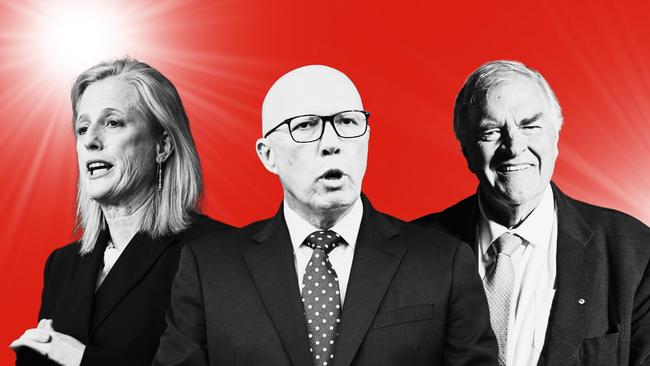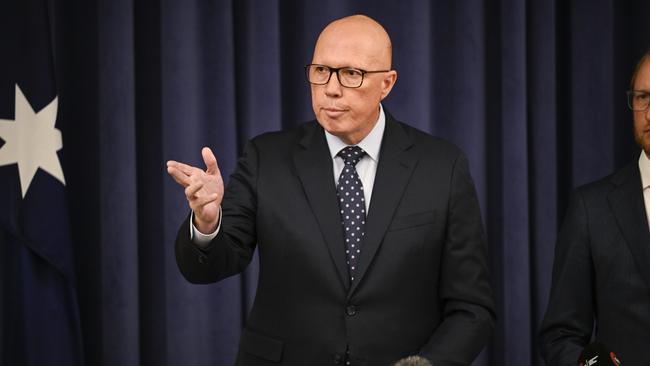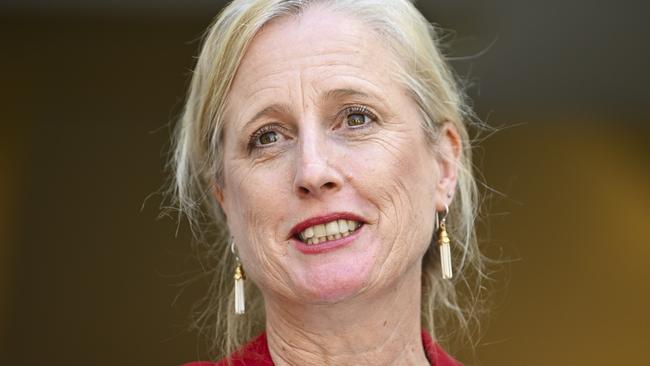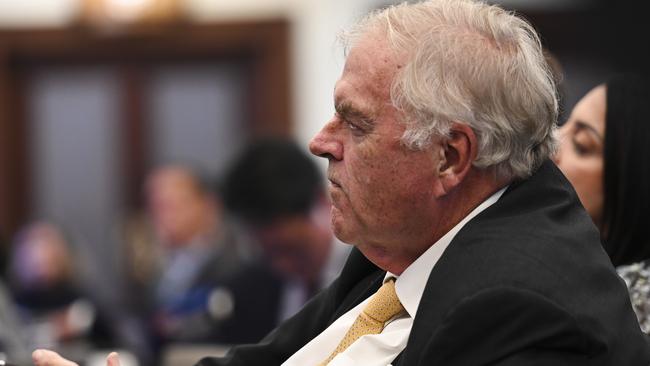
Speaking at the Menzies Research Centre last week, the Opposition Leader announced a Coalition government would “scale back the Canberra public service in a responsible way”. In other words, he will put it through the wringer.
He intends doing this by ridding the public service of those ‘working’ as culture, diversity and inclusion advisers, change managers, and internal communication specialists. To categorise in a broader sense, the public servants who would run screaming if seconded to a call centre during a crisis, or worse still a shopfront counter.
Forecasting something close to Armageddon, Finance Minister Katy Gallagher declared Dutton’s plans would “devastate communities across the country”.
No doubt mindful of ignorant types who agree with Dutton that the public service is “bloated”, she insisted that “Labor’s approach isn’t about growing bureaucracy for its own sake”.
Hear, hear, Katy Gallagher. How could a reasonable person possibly argue that you – a Canberran who has spent your entire life there, a former official of the Community and Public Sector Union, an ACT Labor senator, and the Minister for the Public Service – have a vested interest in massively expanding the number of Canberra public servants?
No wonder Gallagher is particularly upset at the thought of inclusion commissars being shown the door.
She is passionate about diversity in the public service, or rather her version of diversity. Last year she launched the Culturally and Linguistically Diverse (CALD) Employment Strategy and Action Plan. It sets a target of 24 per cent for CALD representation in the Senior Executive Service (SES).

But hang on, isn’t mandating equal outcome contrary to section 10A of the Public Service Act, which requires that merit be the primary factor in recruitment and promotion?
Yes, but the Australian Public Service Commission (APSC) has circumvented this obligation with an impressive piece of bureaucratic doublespeak. As part of the CALD plan, the APSC requires agencies to “Modernise the APS recruitment and promotion processes to apply a rigorous understanding of merit”.
So to clarify, the racial composition of APS senior employees is too vanilla for the government’s liking, hence the APSC will rissole the commonsense definition of merit. Now agencies must assess applicants according to their “emotional intelligence, cross-cultural awareness and cultural intelligence”.
Additionally, the APSC will work with agencies to identify the “specific barriers that have been identified in employment screening during recruitment”. You know, barriers such as the requirement for qualifications and experience, as well as being able to demonstrate one can do the job. By applying what it claims is an enhanced standard of merit, the public service will fill SES vacancies with unqualified and inexperienced candidates. That makes perfect sense, surely?
This target is no mere aspiration. Sending a clear message to the mandarins, the APSC warns agency heads “will be accountable for progress towards the benchmark”. And they are scurrying to comply.
Take for example the APSC’s SES100 initiative, which “supports the [Albanese] Government’s commitment to boost First Nations employment” in the APS by increasing Indigenous representation at the SES level.

As Gallagher boasted in the Annual Statement on APS Reform last December, she had increased the number of Indigenous SES officers from 54 to 85 in just one year.
“I’m confident we will hit 100 in the first half of 2025,” she said.
I’m confident you will too, minister. That is what happens when ideology dictates recruitment decisions. As you have shown, you will have no trouble attracting minority applicants for positions with a starting wage of $200K, plus entitlements. But how is it lawful to replace selection criteria with skin colour across the board?
In the same speech Gallagher spoke reverently of how integrity was the overarching principle that drove her dealings with the public sector - in her words, “where the independence of the public service is protected with requirements that ministers cannot direct agency heads on employment matters”.
She could have fooled me. If her recruitment policy is any indication, the public service has proved most pliable since Gallagher assumed the portfolio.
But as Gallagher said in her speech, she is “building a public service that truly reflects the community it serves”. That’s all very well, but feelgood platitudes are worse than useless in this respect. When institutions embrace diversity as an end in itself, they do not simply foster a culture of mediocrity. By continually appeasing the entitled types they attract, they inevitably subordinate their reason for being to the demands of employee activists.
A case in point is the Australian War Memorial (AWM).
For years it has resisted demands to feature the so-called Frontier Wars in its exhibits or to subscribe to the romantic notion that brave and ingenious Indigenous warriors fought a sustained guerrilla campaign against hordes of white invaders.
That changed in December 2022 when incoming AWM chair and former Labor leader Kim Beazley declared that commemorating these skirmishes was consistent with “a broad interpretation” of war historian and correspondent Charles Bean’s original vision for the shrine.
That was just two years ago. As the Canberra Times reported last month, the AWM is no longer a place for dignified reflection. An AWM-commissioned review by an Indigenous law firm has recommended the organisation begin “censoring and removing all possible colonial terminology and ableist language which reinforces false and outdated attitudes from Memorial-prepared materials”.
That’s right, censoring. The “outdated narratives” in the materials are just one of the many “psychological hazards” outlined in this report. Another is “Fear of negative feedback from conservative voices”. And to top it off, there is the ever-present threat of “lateral violence”, that being “infighting between people from the same oppressed group”.
Don’t laugh: your taxes paid for this drivel. Until these matters are addressed, claims the report’s author, the AWM cannot ensure a “culturally safe and diverse space”. Can we take it these changes are also in line with Bean’s vision, Kim Beazley?

As for Gallagher’s diversity quest, I wonder if it she noticed in the APSC State of the Service Report 2023-24 that women make up over 60 per cent of the APS.
The same report also notes females “have equal or greater representation at every level” from APS 1 to SES Band 2. To paraphrase Gallagher, that composition does not reflect the community it serves.
For some reason the champions of equality suffer from selective blindness when presented with these facts. I am reminded of when the Howard government, in 2004, proposed a modest $1m scheme to persuade more male students to sign up for teaching degrees. It meant they would receive $2000 after completing their first year of study.
If there is one profession that cries out for more men, it is teaching. But a certain ACT education minister contemptuously dismissed the proposal on the grounds it was for men only.
That was Katy Gallagher, who did not give a toss that this vital profession, which she then had responsibility for, failed to reflect the community it served. The shriller the demand for diversity, the bigger the hypocrite.





Look out, Peter Dutton has plans for shiny bum city.